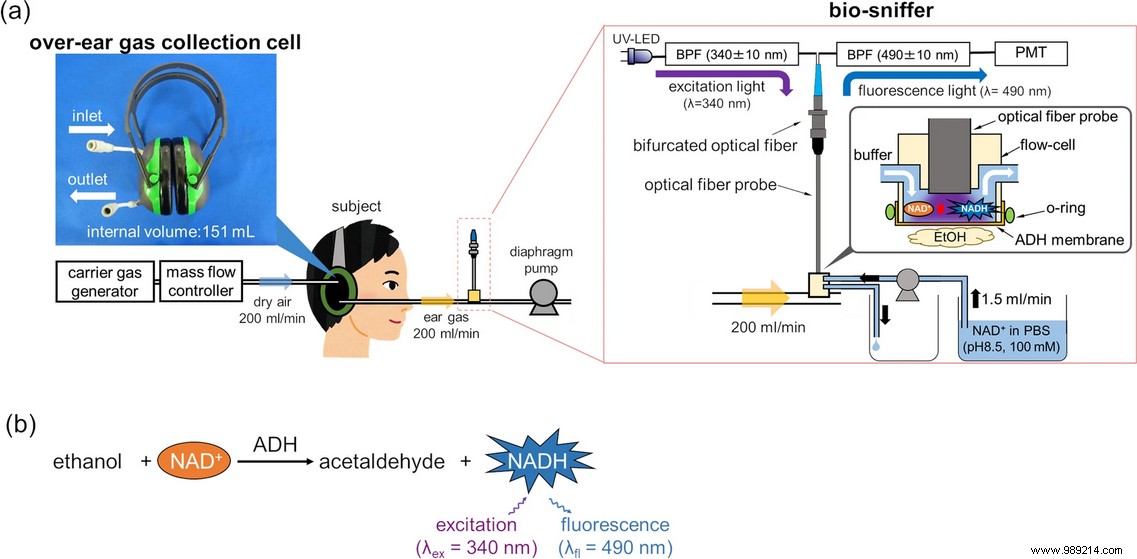Are we going to see the democratization of a new type of breathalyzer? Nothing is impossible, given the recent work of a team of Japanese researchers. They modified ordinary noise-canceling headphones to measure the alcohol released by the skin of the ears.
What if the phrase "blow the ball" no longer in use in the not too distant future? We are obviously not there yet, but scientists from the Tokyo Medical and Dental University (Japan) have developed a new type of breathalyzer which has little in common with the current devices used by the authorities to determine the amount of alcohol present in the blood . However, this device described in the journal Scientific Reports on June 10, 2021 can also be used to determine whether or not a person has broken the law.
The police now use breathalyzers that require you to blow inside for several seconds without stopping . However, some people fail or claim not to. The device of the Japanese researchers will not have this problem since it is a skin test . They initially investigated the possibility of measuring blood alcohol levels at the palm of the hand, but quickly shifted their interest elsewhere.
The researchers chose ears that offer a large enough surface area and above all a skin containing fairly few sweat glands . However, these same glands secrete sweat, which can potentially vary the result of the alcohol test in case of abundance.
The device presented by Japanese scientists is in the form of regular noise canceling headphones . However, the latter has been modified in order to pass a fine air current through it. At the helmet outlet, the air comes into contact with an ethanol vapor sensor for analytical purposes. Three volunteers tested the device on their ears for two hours while consuming alcohol. Regularly, these volunteers also underwent conventional breathalyzer tests.

According to the results, measuring via the ears gave a blood alcohol level similar to that of breathalyzers with, however, a delay of thirteen minutes. As lead study author Koji Toma explains, a quick result (as in a police check) involves wearing the helmet for about 30 seconds.
Now, researchers are focusing their efforts on developing this idea with the aim of adapting the device to other medical uses. These are likely to be uses for which the continuous analysis of blood biochemicals can serve. An example is the measurement of the acetone level , indicating the amount of fat the body burns during physical activity.